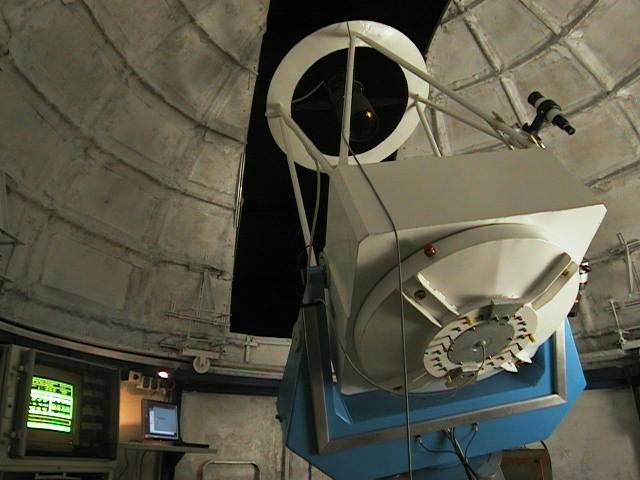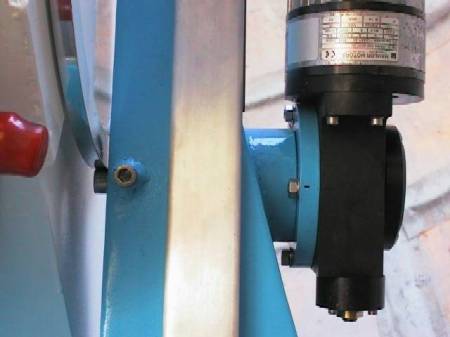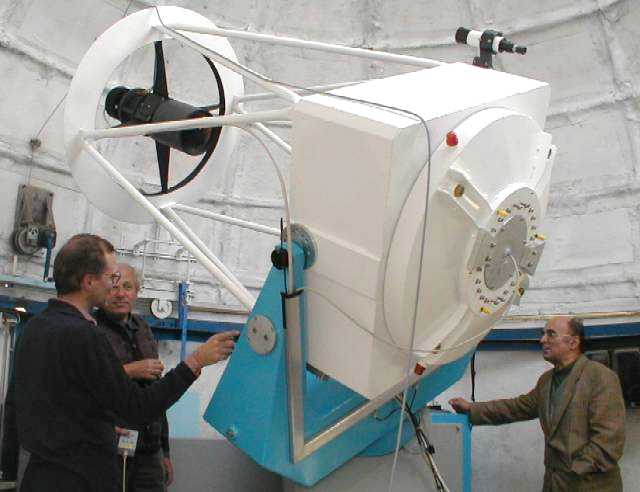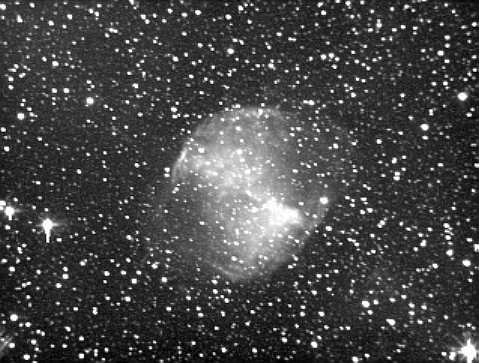

The image above shows the 0.6m telescope at night. On the left, the computers that control the telescope and the CCD camera can be seen. The dome that houses the telescope has a diameter of 4.5 meters, and a slit 1.2 meters wide.
Mount and tube were built by E. Meyer and E. Obermair follwing a design by R. Pressberger (University of Vienna and Purgathofer Observatory, Klosterneuburg, Austria). This design, for which some details are described below, is also known as "New Austria Mount".
The drive system and control software was developed by M. Stoll (Federal Ministry of Science and Transport, Vienna, Austria). With a precision of one minute of arc, it can point the telescope to thousands of celestial objects (including the Sun, the Moon, all planets, all numbered minor planets, and all Messier, NGC and IC objects) with a speed of up to 120° per minute. It features model mounting for increased pointing accuracy, and can track moving objects, like minor planets and comets.
The optics were designed and supplied by Asto-Optik Keller. The design called "Deltagraph" features a 0.6m f/3.0 parabolic primary mirror and a three-lens Wynne corrector, resulting in a focal length of 1980mm (f/3.3).

The "New Austria Mount" featured friction drives in both axes, which avoids any periodic error. In this view, the friction wheel of the R.A. drive can be seen. In the unique design of the "New Austria Mount", there is no R.A. axis. Instead, the fork rests on a steel ball, which is located inside the fork. (The location and size of the steel ball is marked by a red circle in the image above.) This helps so save weight, and ebanled to build a leightweight, compact and very stiff mount.
The view at left shows the friction wheel of the Declination drive. The DC motor, with the gear and decoder, can be seen mounted on the fork arm. The image at right shows on of the two Declination bearings. A hardened steel ball (on the end of the fork) rests in a Teflon pan.

In this view, some details of the Declination drive can be seen. The friction wheel with its drive shaft is visible just insedie (left) of the fork arm. Outside the fork (right) is the gear box (black) and the encoder. The DC motor is just outise of this view, on the top.

This image shows E. Meyer, R. Pressberger and E. Obermair (from left to right) at the 0.6m reflector. Minor planets discovered at the Davidschlag observatory have been named in honor of R. Pressberger, who constructed the mount, and M. Stoll, who designed the computer control system, respectively.

The first light observation with the 0.6m reflector took place on October 26, 1999. Shown above is the "first light image" of the well known planetary nebula Messier 27. The 60 second integration with a SBIG ST-6 CCD camera was made in bright light from the full moon, and with the prime focus corrector lens not yet installed. For additional CCD Images, please visit the CCD Gallery.